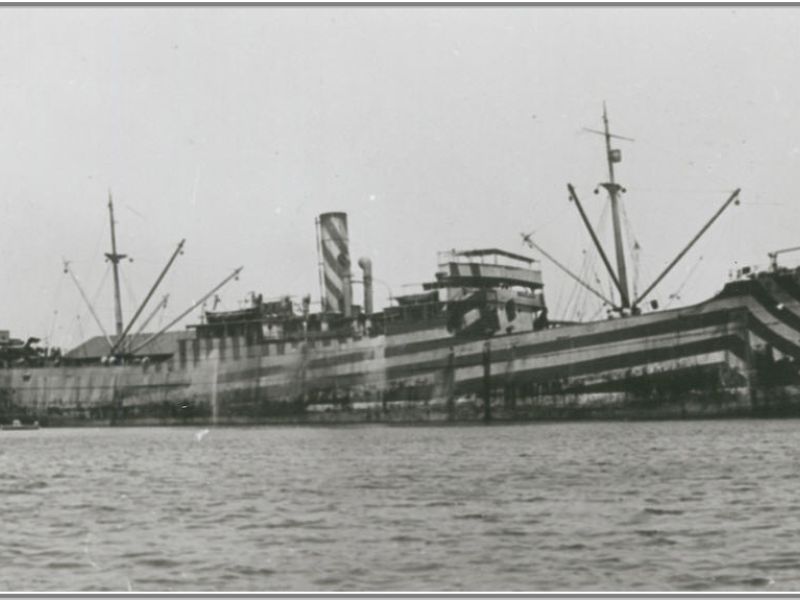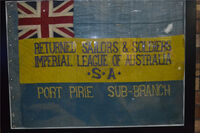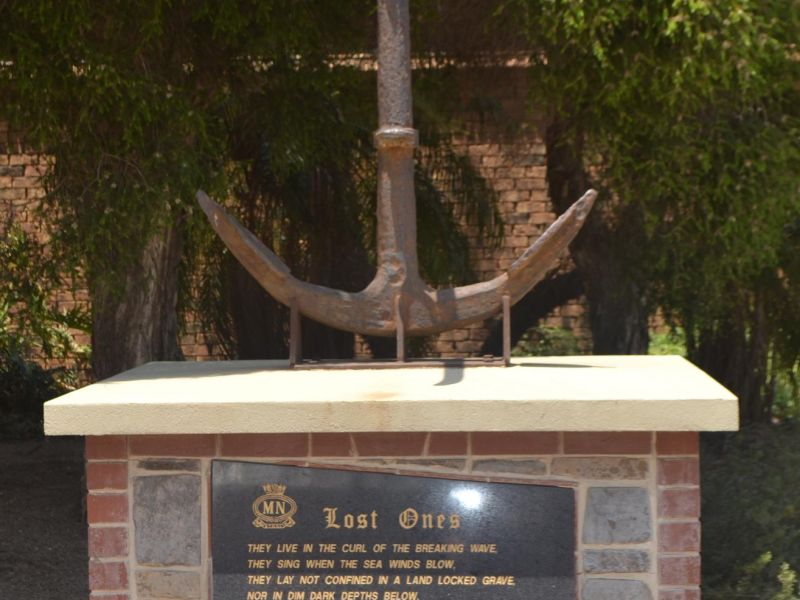Merchant Navy and Mariners Memorial
“The most important road on the earth’s surface is the sea road.”
“Who controls the sea road, wins the war.”
¹From about the turn of the century (1900) Port Pirie was the busiest international sea port in the nation, probably for a period of fifty years or longer. Between 1890 and 1914 thousands of European seaman must have jumped ship at Port Pirie. Shipping records indicated as many as 200 sailors a year deserted in Port Pirie because of the ease of getting a job at the Smelters or as harvest labour. Port Pirie was christened the Liverpool of South Australia.
Merchant shipping ferried sheep, wheat, wool, timber, ore, coal, metals and general provisions as South Australia’s first provincial city established itself. Mariners from all over the globe visited Port Pirie which soon gained a reputation as a friendly port.
³Australia has used merchant ships to despatch its colonial or national armed forces personnel to war-fighting or peace-keeping operations since 1885, when a New South Wales contingent went to the Sudan. Forces from several colonies were transported to the Anglo-Boer War 1899-1902. Post-Federation Australian forces deployed to the Boxer Rebellion 1900-1901 and to the First World War (“The Great War”) 1914-1918 where 182 Australian merchant seaman lost their lives.
By far, Australia’s largest commitment of armed forces was to the Second World War 1939-1945, one in which, besides other menaces, the Japanese threat to Australia itself was very real. The task of moving men and munitions, maintaining supply and communications, transporting and convoying special cargoes, devolved upon ships of many types and tonnages and was a paramount requisite for Allied victory. Since then, combat operations in Korea, the Malayan Emergency and Vietnam, as well as numerous peacemaking and peacekeeping tasks have engaged the Australian Defence Force.
It is not widely known that about 6.5 per cent of all Merchant Navy personnel died on Second World War service, a higher percentage than any other Service, and that during the Allied recapture of the Philippine Islands there were more Merchant Navy casualties than those of all other Services combined. Of the seventy six merchant ships lost in Australian waters to mines, torpedoes, shelling and bombing, twenty-nine were Australian.
Australian seamen killed on these numbered 349 and a further 37 died while prisoner of war. The number of Australian merchant seamen lost on all the oceans will probably never be known.
The Royal Australian Navy supplied gunners to Defensively-Equipped Merchant Ships (D.E.M.S.) and thirty-eight of these gunners lost their lives. ²Often though, merchant ships were unarmed which left them exposed to attack from the enemy, both in foreign waters and closer to the Australian coastline. Their work was especially dangerous because the convoys were slow.
Sources:
¹Port Pirie, The Undaunted Years by Ken Bullock
²https://anzacportal.dva.gov.au/commemoration/commemoration-days/merchan…
³http://www.merchant-navy-ships.com/australian-fleets/

 RSL (Port Pirie Sub Branch) Inc.
RSL (Port Pirie Sub Branch) Inc.